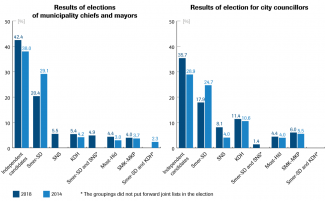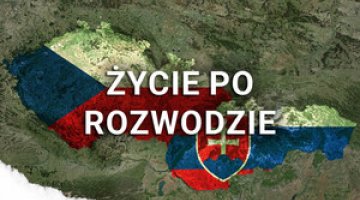Local election in Slovakia: Smer comes first, but not unscathed
Elections to the councils of over 1,200 municipalities and cities coupled with elections of city mayors and chiefs of municipalities were held in Slovakia on 10 November. With voter turnout at 49%, high by Slovak standards, the best result was achieved by independent candidates: 42% of chief and mayor positions (in 2014, they garnered 38% of the positions) and 35% of city councillors (an increase from 29%). The political grouping which achieved the best result was the dominant party in the government coalition, Smer – Social Democracy, which, however, performed clearly worse when compared to the preceding election as regards the number of chiefs and mayors (20% as compared to 29% in the previous election) and city councillors (18% as compared to 25% in the previous election) representing the party. The key opposition parties, including Freedom and Solidarity (SaS) have poorly developed local structures and did not play any major role during this election.
Commentary
- The election result is alarming for the governing party Smer. Even though the support levels for this party were the highest, it lost the positions of mayors in Kosice, Slovakia’s second largest city, and in Nitra, which had previously been a bastion for it. The mayor originating from Smer was beaten in this city by one of the organisers of the anti-governmental demonstrations in spring. Out of the eight capital cities of the regions, Smer lost three that were governed by politicians linked to this grouping; the only clear success being the fact that the mayor of Banska Bystrica, who is supported by Smer, has maintained his position.
- This was the third election in a row (after the parliamentary in 2016 and regional in 2017) in which support for Smer fell. The support level would have certainly been even lower if not for the well-developed local party structures (Smer has over 15,000 members, i.e. more than twice as many as the second most numerous grouping, the Christian-Democratic Movement – KDH). The opposition was unable to put forward candidates for mayors and chiefs in a third of the cities and municipalities in which Smer won. The change of the party’s social profile is also important: while in 2012 it covered all social groups and regions of Slovakia, at present residents of smaller municipalities and elderly people, predominantly from the poorer eastern part of the country, are gaining an increasing share in the party’s electorate.
- The high and still growing popularity of independent candidates indicates that the public is becoming increasingly distanced from the traditional political parties, especially in big cities. Quite a few relatively young candidates with no political experience were successful in the recent election. The new mayor of Nitra, Marek Hattas (31 years old) and the urban activist Matúš Vallo (41, for whom the office of mayor of Bratislava may mark the beginning of his career in politics on the national scale in one of the liberal groupings) may serve as examples. This phenomenon encourages new political groupings to be formed – such a move has already been announced by President Andrej Kiska, who will not seek re-election in spring 2019. At the same time, the political scene is becoming increasingly fragmented, which makes it difficult to form coalitions. According to a recent poll, ten groupings could enter the 150 seat parliament (at present, there are seven groupings in parliament).

Source: pravda.sk





